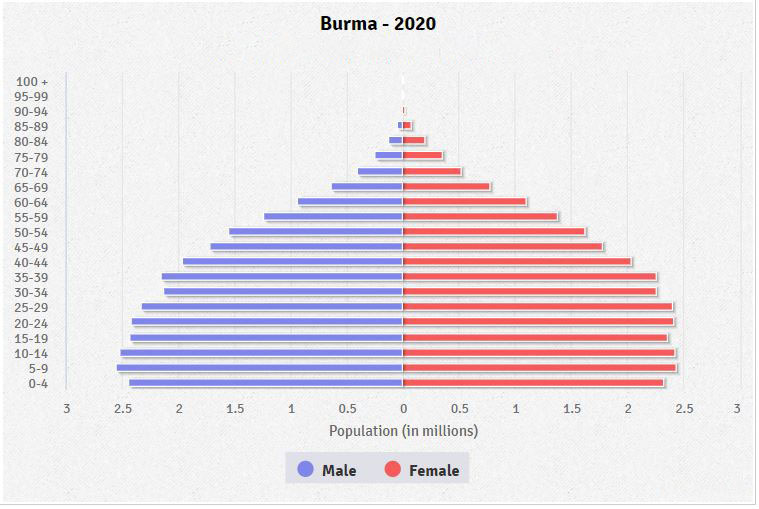
The main sources are the official website of Ministry of Health (MoH), Myanmar () and the 2014 Myanmar Population and Housing Census ( census/). This paper briefly describes the current situations of healthcare in Myanmar, based on sources available in English from the Internet, as well as scientific papers in English and Myanmar language newspapers reporting the recent changes. In the field of healthcare, there are problems in maternal and child health, nutrition, infectious disease controls, tobacco controls, access to healthcare services, and quality of services.


Since then, the democratic process has accelerated, but there are many problems to be resolved in every field. The election of 2010 led Myanmar to a civilian government in March, 2011. In this heterogeneous society, there are many obstacles to the provision of health services to the whole nation. In addition, illegal immigration across the border is not rare. 1) There are 135 different ethnic groups with their own languages and cultures in Nay Pyi Taw Union Territory and 14 states/regions. According to the Census 2014, the population in the Union of Myanmar was 51.41 million in September 2014. Myanmar is a country with an area of 680,000 km 2 (1.8 times of Japan) surrounded by Thailand, Laos, China, India, and Bangladesh. With these efforts and support, a marked progress is expected in the field of healthcare. There are many international donors, including the Japan International Cooperation Agency, supporting health in Myanmar. A trial prepaid health insurance system started in July 2015, to be followed by evaluation one year later. Although the improvement was marked, the figures did not reach the levels set by Millennium Development Goals 4 and 5. The information on causes of death in the general population could not be retrieved, but some data was available from hospital statistics. Although there were not enough medical doctors (61 per 100,000 population), the number of medical students was reduced from 2,400 to 1,200 in 2012 to ensure the quality of medical education. Since hospital statistics by the government cover only public facilities, the information on private facilities is limited. National non-governmental organizations and community-based organizations support healthcare, as well as international non-governmental organizations. The Ministry of Health reorganized into six departments.

The crude birth rate in the previous one year was estimated to be 18.9 per 1,000, giving the annual population growth rate of 0.89% between 20. According to the Census 2014, the population in the Republic of the Union of Myanmar was 51,410,000. Since there is a limited overview on the healthcare in Myanmar, this article briefly describes the current states surrounding health services in Myanmar. Although the democratic process has accelerated since then, many problems in the field of healthcare still exist. Myanmar transitioned to a civilian government in March, 2011.


 0 kommentar(er)
0 kommentar(er)
